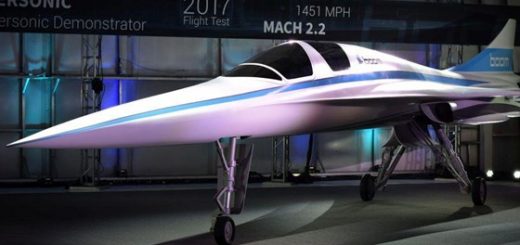AMotion Center: Component Production through AM
3D printing has many advantages in the production of parts. This is why the AMotion Center was founded, a cooperation between the GF Casting Solutions and GF Machining Solutions divisions. What is this center about? The product portfolio of the AMotion Center is primarily aimed at the aerospace, energy and motor sports markets. (Source: gemeinfrei / Pixabay )
The product portfolio of the AMotion Center is primarily aimed at the aerospace, energy and motor sports markets. (Source: gemeinfrei / Pixabay )
The AMotion Center has been in existence under its name and with the current range of services since early 2019. The center is a collaboration between the divisions GF Casting Solutions (for the serial production of components) and GF Machining Solutions (for the development of 3D printing machines). Precicast, which was acquired by GF in April 2018, had already entered the metal-3D printing market at the end of 2016.
![]() What is Manufactured in the AMotion Center?
What is Manufactured in the AMotion Center?
The product portfolio of the AMotion Center is primarily aimed at the aerospace, energy and motor sports markets – in the energy market, it mainly includes the application area of industrial gas turbines. Accordingly, a range of series parts are manufactured, from pump casings to the most diverse applications of gas turbine technology. However, the center is also pushing ahead with developments, e.g. for engine technology, which have already been successfully tested and will soon be ready for series production.
![]() What are the Advantages of Metal 3D Printing in the AMotion Center?
What are the Advantages of Metal 3D Printing in the AMotion Center?
For GF, one reason for manufacturing in the AMotion Center is the massive time savings, because unlike most conventional manufacturing processes, no tools or molds are required. Ideally, a CAD model that has been optimized for 3D printing can be used to directly initiate an order. On the other hand, the 3D printing process offers even more possibilities in terms of geometric complexity. The powder is fused layer by layer at the crucial points, thus gradually forming the complete component – or, depending on the size, several components next to each other. For example, unlike casting, no cores are required to create cavities. The process also enables the production of very thin-walled and filigree geometries.
Depending on the customer’s application, the AMotion Center specialists employ two powder bed-based technologies:
With the Laser Powder Bed process (L-PBF), GF is able to produce components made of various nickel-based alloys with maximum dimensions of 500 x 500 x 500 mm.
Due to the high temperatures of up to 1000° C, the Electron Beam Powder Bed process (EB – PBF) enables the processing of special materials such as titanium aluminides.
![]() Components with Nadcap-Certification
Components with Nadcap-Certification
Regardless of the AM method, the quality of the components is always assured, because GF is one of the five leading companies worldwide to hold the Nadcap certificate for additive manufacturing (AC7110/14). Nadcap offers a uniform approach to validating special processes in the aerospace industry. Only companies holding a Nadcap certificate are allowed to produce for the aerospace industry. To obtain accreditation in the field of additive manufacturing, the first mandatory step is an industrial approach to the process. GF has established a sound quality system at the AMotion Center, which has enabled the company to work to the highest standards that meet the Nadcap audit checklist. The accreditation ensures that the AMotion Center monitors the complete additive manufacturing process, maintaining consistently high component quality throughout the manufacturing process.
![]() Additive Manufacturing Complements Casting
Additive Manufacturing Complements Casting
Despite the numerous advantages of additive manufacturing, the process is not intended to replace casting at GF in the long term. In additive manufacturing, complex applications can be designed flexibly with short reaction times, since no models or tools have to be manufactured and production can be started within a few days after the order has been placed. On the other hand, additive manufacturing has its limits in terms of the range of materials and build space available. Casting processes are ideal for the production of medium and large series of complex parts in which many functions can be integrated. Examples include large structural parts for turbines or light metal components used in car bodies. For this reason, the company continues to use both conventional casting processes as well as modern 3D printing processes: the aim always is to find the right process for the application.
Source: Spot Light Metal




Recent Comments